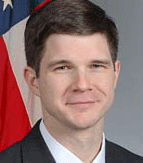
While welcoming you to this talk, may we request you to kindly share information about the role Textile and Clothing industry plays in US economy?
The textile and apparel industry provides the US economy with a major source of employment and economic activity. The industry is one of the largest employers in the manufacturing sector, employing 541,300 workers in 2007, or 4 percent of the US manufacturing workforce. Our industry also supports thousands of jobs in the design, sourcing, distribution and retailing of textiles and apparel worldwide.
Many other industries and workers are dependent on the textile and apparel industry for their livelihood. The industry is the principal customer for America's raw cotton and wool as well as for its manmade fibers and related products. The industry is also an important purchaser of chemicals, machinery, energy, transportation, and other services.
How would you like to word for present state of Global textile and clothing industry vis-a-vis globalization?
Worldwide, the textile and apparel industries are striving to stay globally competitive. In order to do this, it is paramount that the industries continue to retool and leverage their strengths. This requires integrated partnerships between producers of fiber, textiles and apparel, as well as retailers and distribution networks. Establishing global brand awareness is another important marketing tool.
It is also vitally important that the US continues its efforts to open up markets through a successful Doha Round and other bilateral and regional trade agreements.
A likely recession in the US could have wide ramifications. It can have major implications on the downside and drag down major manufacturing markets. How do you envisage US Textiles/Clothing markets getting affected by this situation?
The economy in the United States has recently shown signs of a slowdown in activity. In response, the Administration is taking immediate and long-term steps to strengthen our economy through the implementation of an economic stimulus package and our continued efforts to open up export markets through Free Trade Agreements.
With respect to textiles and clothing, there could be a trend towards greater industry consolidation to create more efficient and competitive producers in the face of tightening domestic markets. As the global economy faces similar challenges, there may be opportunities for new partnerships and increased export markets.
“The future of the US apparel industry lies in the hands of efficient and ‘well-capitalized’ producers.” How would you support the statement in the context of present profound changes viz quota elimination, retail consolidation, excess supply versus demand, compliance criteria and faltering US economy…. going on in Global Apparel industry?
The elimination of quota, retail consolidation, excess supply versus demand and other issues provide challenges to well-developed apparel producers around the world. In the United States, an apparel company will succeed in the face of these challenges if it is well-positioned in terms of finance, market research, investment in technology and a has willingness to expand markets globally.
So, what future prospect do you see for US Garment industry?
The US apparel industry seeks out niche opportunities where it is competitive in domestic and global markets, such as performance outerwear and protective clothing for military and other end-users. We see this trend continuing in the future.
Global demand for US apparel brands will continue to be strong. US apparel exports to traditional, “established” markets, such as Europe and Canada, have increased between 2006 and 2007, as have exports to certain FTA markets (Bahrain, Chile and Israel), and to certain Asian markets (China, Hong Kong and South Korea). Growth in US apparel exports to these markets was in the double digits over the period 2006-2007.
Bio fuels issues adding fuel to Cotton crisis, and high inflation in cotton prices are some of the major concerns of industry world over, today. How would US textile industry face the situation and what are the Ministry’s plans on anvil?
According to the US Department of Agriculture, total foreign cotton production will reach record levels during the current season. Cotton acreage has remained high despite relatively low prices for cotton relative to other crops, as improved yields sustain profitability. The introduction of genetic engineering and other agricultural technologies has restrained the cost of growing cotton just as the world economy has boomed. World cotton prices have shrunk relative to petroleum-based fibers and relative to other agricultural products (corn, soyabeans).
The textile industry is undergoing a major reorientation towards non-conventional applications of textiles- the technical textiles. How do you read the future of this industry? How is US placed on this front? Which all steps are mooted by the Ministry to augur growth into this sector?
Technical textiles hold enormous growth potential for the US textile industry. There is an ever-expanding range of applications for technical textiles. Advances in fiber, yarn, fabric and manufacturing technologies continue to lead to new application opportunities and are helping technical textile manufacturers meet the continuously expanding technical objectives and expectations of their customers.
And your invigorative message to our million+ visitors/members (investors) would be-
The US textile and apparel industry remains a major source of economic activity and employment in our economy. From the mill worker in Greenville to the designer in New York to the shipper in L.A., the US will continue to play a major role in global textile and apparel trade.
Published on: 16/06/2008
DISCLAIMER: All views and opinions expressed in this column are solely of the interviewee, and they do not reflect in any way the opinion of Fibre2Fashion.com.